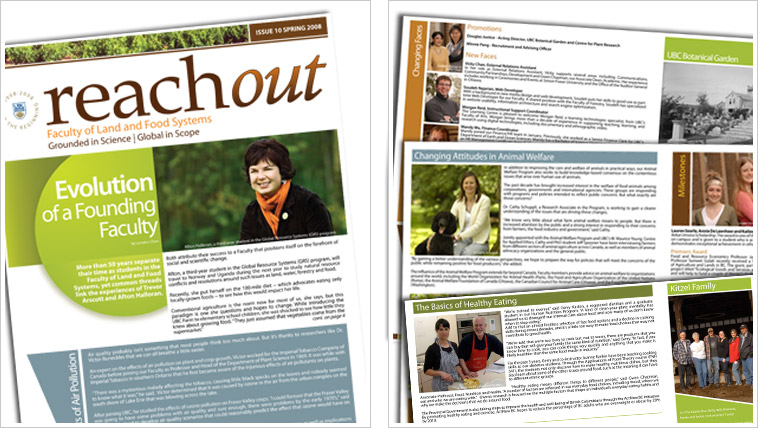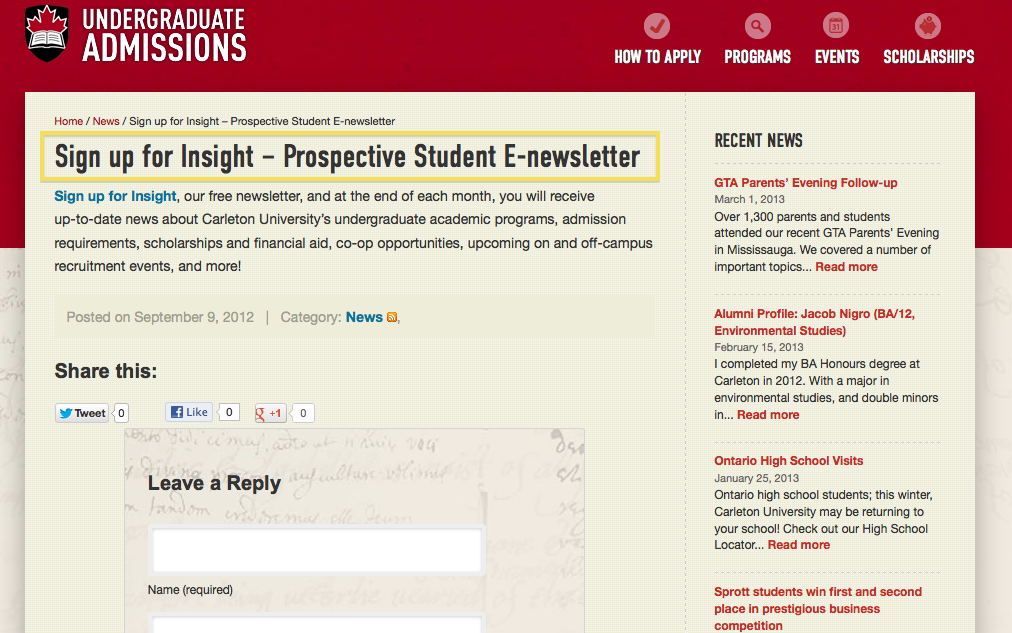Publishing college newsletter content is an essential aspect of any communications strategy.
Integrating a newsletter into your content calendar does not have to be complicated or time-consuming. If done correctly, with the right tools and effective scheduling, issuing a newsletter can be a simple way to boost your entire communications plan by a few notches.
There are likely two questions you are asking yourself: “Why should we issue a newsletter?” and “How can we get started?” Let’s dive in and find some answers.
Why it’s important to issue a College or University Newsletter
1. Expand your reach. Students and faculty are integral to a college’s overall network, but many people outside campus are interested in what’s happening there.
By offering a newsletter to an extended audience, your college will expand its overall branding to various subsets of the external community, including potential partners and prospective students.
2. Strengthen your ties. Ultimately, a newsletter helps your college stay connected to a given community.
By offering subscribers a regular dose of college-related news and information, you also provide them with another way to contact you and keep in touch. Even as students or faculty graduate and retire, they will likely stay subscribed to the newsletter, preserving their relationship with the college.
In a nutshell, what is the purpose of the newsletter for university? The purpose is to expand your reach and to strengthen your ties.
Example: One of University of British Columbia‘s various newsletters helps the Faculty of Food and Land Systems “Reach Out” to their audiences.

How to launch and maintain a College or University Newsletter
1. Define your audience(s): One of the most significant advantages of a newsletter is that you can design it to target a specific audience. Ultimately, this lets you directly contact a specific demographic with information on important news, updates, and events.
For example, you can launch newsletters for alumni, prospective students, partners, faculty, staff, and current students. This is beneficial because it allows you to enhance the impact of your communication efforts on various initiatives (open houses, new scholarship opportunities, international programs, new research projects, etc.)
Defining your audiences and then designing distinct newsletters for each will help readers be aware of opportunities that interest them.
Example: Carleton University publishes a monthly newsletter specially catered to prospective students.

2. Develop a schedule and a team: Once you’ve defined your audience, you must establish a schedule and a team. Maintaining a consistent schedule for your college or university newsletter will ensure a timely and efficient distribution process. Set up a content calendar to map out the creation and distribution timeline and which stories will be featured in the newsletter.
This schedule will be easier to draft when you know who you will be working with, so develop a team and ensure that each member knows how they will be involved with the newsletter each month (or each week! You decide the frequency of the issues.)
As always, we suggest including students in your higher ed marketing initiatives.
For example, students can help choose topics and write the content for a newsletter. Ideally, someone from your target audience would be on the team. For example, an alumnus would help with the Alumni Newsletter, an international student with the International Student Newsletter, etc.
3. Set up a template: You don’t need to reinvent the wheel when sending a newsletter, but a college newsletter design certainly helps.
Whether you distribute a weekly, bi-weekly, or monthly newsletter, the best way to maintain a smooth process is to create and stick to a specific template.
Many different email marketing service providers (MailChimp, Campaign Monitor, and Vertical Response) allow you to customize any of their available templates. Once you choose a template, modify it so that it includes the following:
-
- College or University logo
- Social media buttons
- Contact information
Once your template is ready, you must insert new content and corresponding images. This will allow your team to maintain a simple process and consistent look.
4. Make it visible: Make it easy for people to subscribe to your newsletter by setting up a “Sign Up to Our Newsletter” call-to-action on your website.
If you’re setting up a general newsletter for the entire college or university, place the sign-up option on every site page by integrating it into your header or sidebar.
Or, if you decide to distribute several audience-based newsletters, incorporate a “Newsletters” page into your navigation and list all of the different newsletters on that page with the corresponding “sign-up” option for each one.
Example: California College of the Arts (CCA) placed its newsletter page through its “About Us” section. Also, the sign-up form allows users to sign up for several CCA newsletters that may interest them.

5. Monitor and analyze: Analytics is key to maximizing your newsletter campaign. Almost every email marketing service provider will offer a monitoring tool that will allow you to track specific metrics, such as the number of new subscribers, how many recipients opened the newsletter, etc.
This level of monitoring, paired with Google Analytics, will give you an even more detailed view of the activity on your newsletter and how readers are engaging with it.
Setting up the analytics of your newsletter properly will help you distinguish your audience (alumni, prospective students, faculty, etc.) and allow you to follow up with each reader based on how they interact with the newsletter.
If your college or university has yet to launch a newsletter, now is a perfect time to start it.
Gather a dedicated team, establish your goals and audiences, set a template, and follow a manageable schedule.
After the first few issues, you’ll find your readership going up quickly, and you can expect to achieve a more in-depth connection with your communities.
Does your college or university publish a newsletter? If so, how do you find it has helped you connect with your audiences?
FAQ To Consider
What is the purpose of the newsletter for university?
The purpose is to expand your reach and to strengthen your ties.






